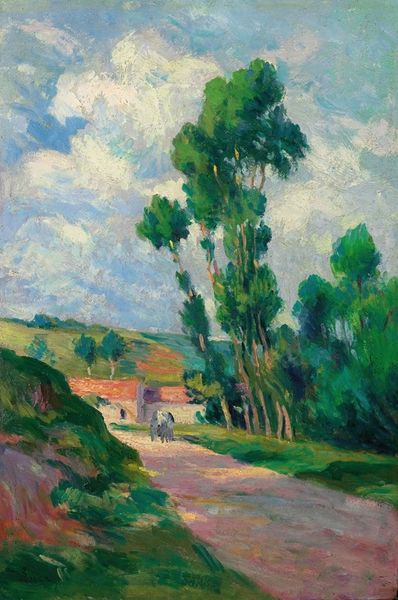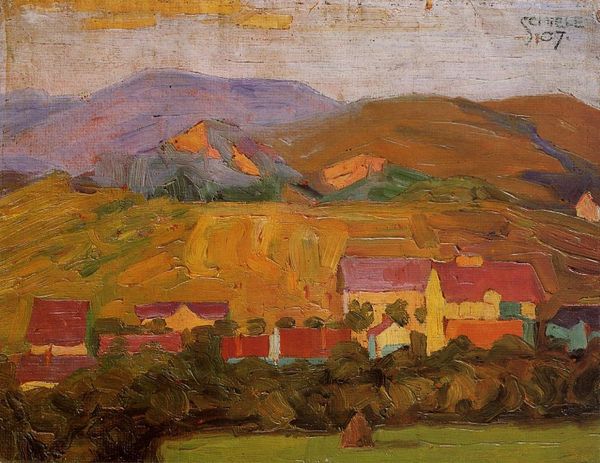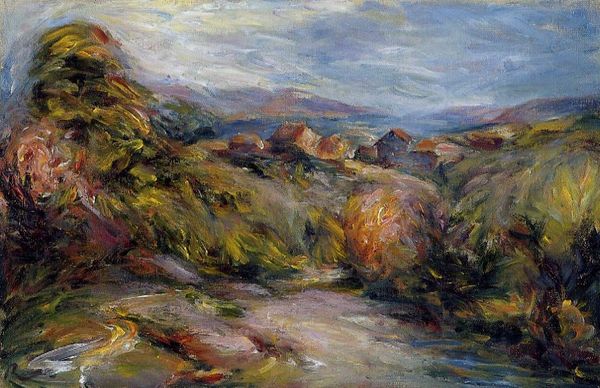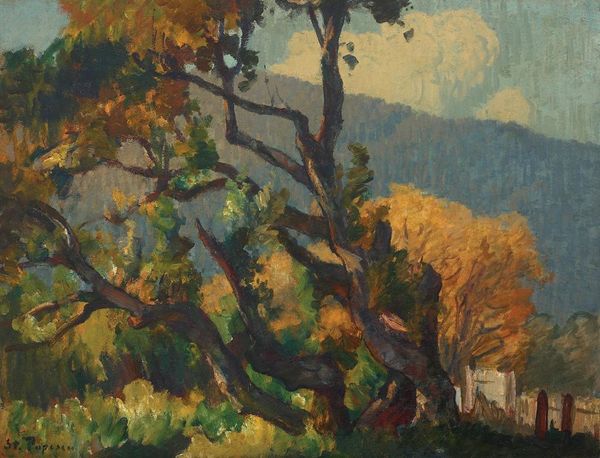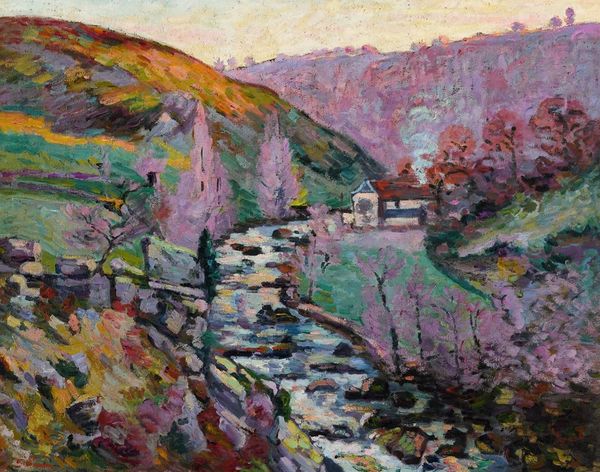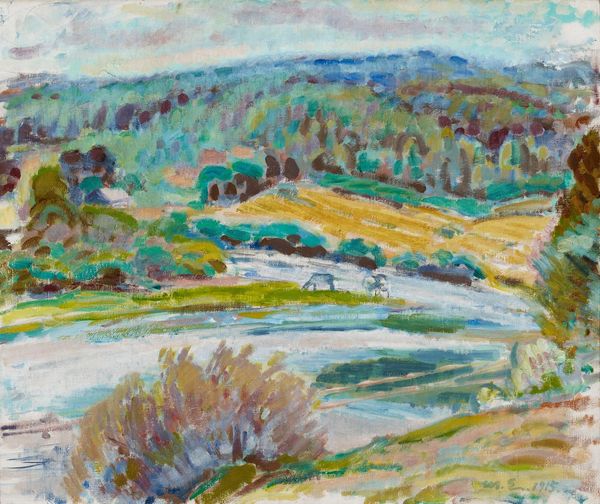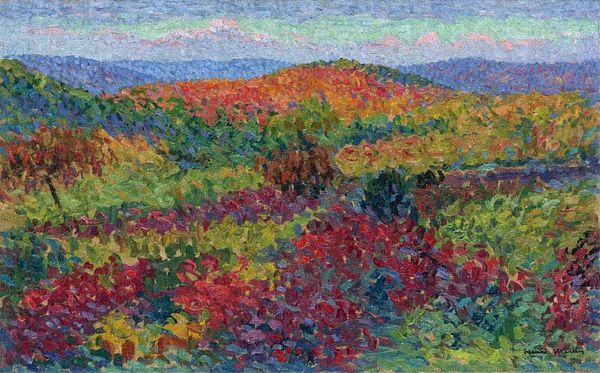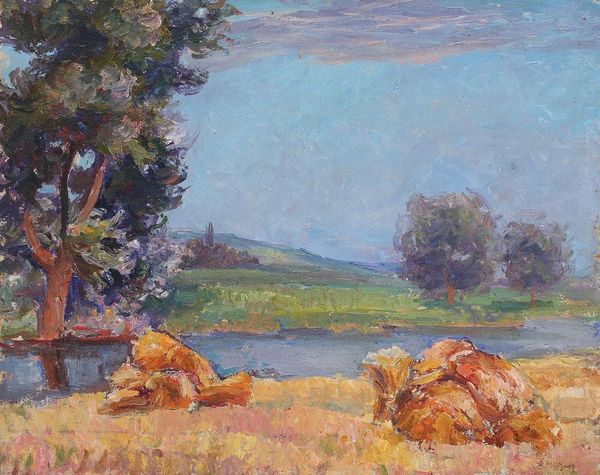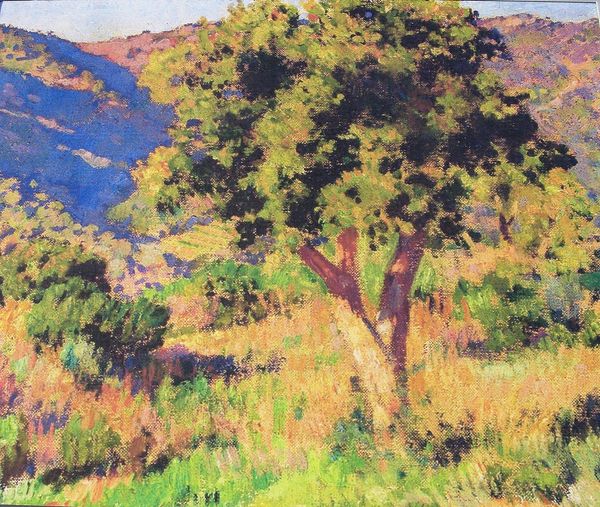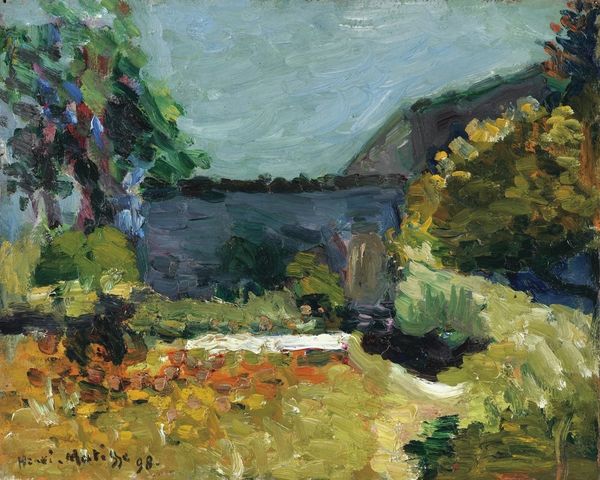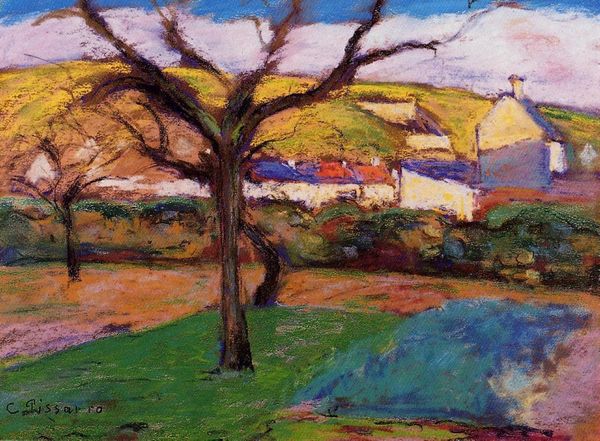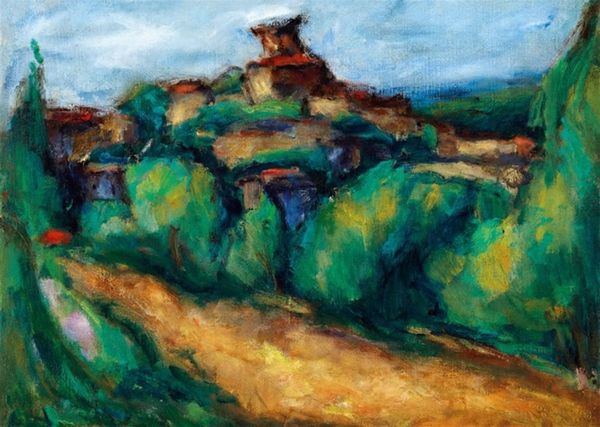
painting, plein-air, oil-paint
#
tree
#
fauvism
#
fauvism
#
painting
#
impressionism
#
plein-air
#
oil-paint
#
landscape
#
impressionist landscape
#
seascape
#
post-impressionism
#
expressionist
Copyright: Public domain
Curator: Looking at this landscape, I’m immediately struck by its sheer exuberance! The explosion of color gives the eye nowhere to rest. Editor: Indeed. What we're seeing is a painting by Armand Guillaumin, entitled "Landscape of Creuse at Spring". He was a contemporary of the more well-known Impressionists, and his depictions of the French countryside offered an important contribution to that movement's radical reimagining of the relationship between painting, landscape, and modern life. Curator: Well, I can certainly see his Impressionist roots. But it feels like something more…almost Fauvist in its unrestrained use of color. Look at how he deploys those intense oranges and pinks! They don't describe the landscape as it is so much as how he *feels* it. Editor: Precisely! Guillaumin belonged to a second wave of Impressionists who pushed beyond naturalistic depiction. As the art market grew and exhibitions became more public in the late 19th century, artists like him navigated increasing commercial pressures, experimenting with heightened palettes and subjective expressions to distinguish their work and appeal to new audiences. Curator: It's a far cry from Monet's muted tones. But if the objective was visibility, I would say he certainly achieved that. I mean, it's really vibrating with life, isn't it? Even the shadows seem to pulsate. Editor: You are spot on about those "vibrations," if by vibrations you mean the painting's visual rhythm. Notice how the sinuous lines of the path, fields, and trees, create a compositional dance. Curator: Still, there's a sense of deliberate artifice. Those pink trees! Does nature ever look quite like that? It really foregrounds the artist's subjective interpretation. It asks us to consider what it means to represent the landscape at all in the age of industry and modernity. Editor: Perhaps Guillaumin suggests that representing the landscape involves intensifying it to the point of almost hallucinating nature and its various shapes of colors. It’s a rather unique take, I would say. Curator: Exactly! An important commentary, which perhaps still rings true today. Editor: Agreed. And by appreciating those dialogues, we can learn about ourselves too.
Comments
No comments
Be the first to comment and join the conversation on the ultimate creative platform.
